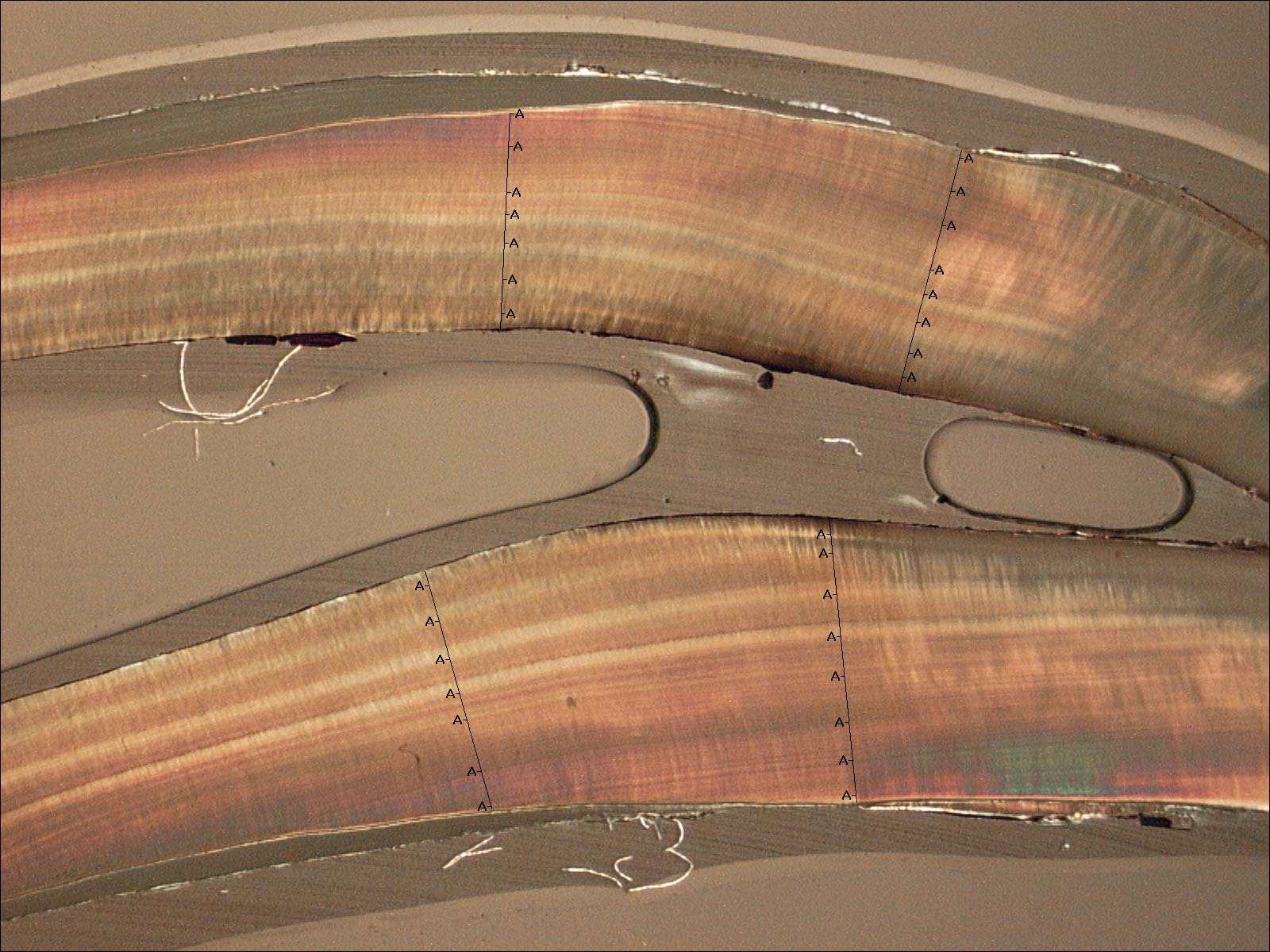Progress Report: April 1999
Project Title: A Retrospective Study of Top Predator Trophic Positions, Productivity, and
Growth in the Gulf of Alaska for 1965-75 and 1975-85
Investigators: Elizabeth Sinclair (PI), NMFS, Thomas Loughlin (PI), NMFS, John Piatt (Cooperator), USGS,
and Keith Hobson (Cooperator), CWS
Objectives: Through stable isotope analysis of teeth, feathers, and scales
we will compare the relative trophic position of Steller sea lions, tufted
puffins, crested auklets, sockeye salmon, and walleye pollock before and
after the mid-1970s regime shift in the Gulf of Alaska and Aleutian
Islands.
We will also compare sea lion age-specific growth indices for the periods
1965-75 and 1975-85 through measurement of the width of growth annuli in
canine teeth. After completion of laboratory analysis the relative trophic
positions and individual growth trends will be compared to changes in ocean
conditions and abundance of prey populations.

The image is of a thin-section from a female Steller sea lion canine tooth. I
have drawn lines across the tooth at four points and marked the growth layers
for measurement. After each layer is measured, dentine will be extracted for
stable isotope analysis.
Background: The primary objective of this study is to measure the impact of
bottom-up processes on upper trophic layers by comparing the timing of a
potential shift in trophic position and individual growth with that of a
"regime shift" in the Gulf of Alaska. Historical records of diet for many
top predators are unavailable, but a shift in trophic position can be
measured through stable isotope analyses of teeth, feathers, and scales.
Tooth and body size are significantly correlated in otariids and growth
layer widths correlate well with environmental conditions and individual
survival.
Status: All sample material has been collected and tooth sections have been
prepared and aged. Extraction of core material from tooth sections is
currently underway. The oceanographic data and analysis of historical prey
abundance is available and currently being expanded. We hope to complete
laboratory processing of the material by Autumn 1999.
